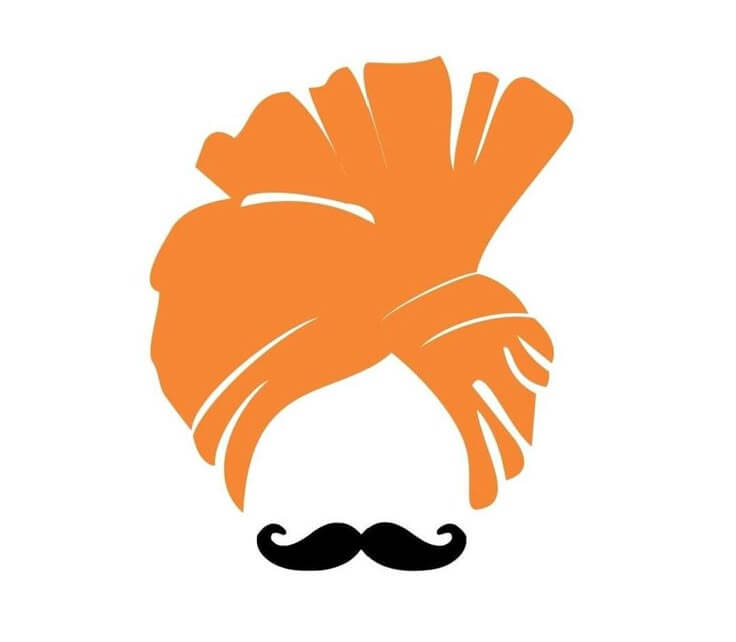Tarfa Nrutya: A Glimpse into the Heart of Maharashtra’s Cultural Heritage
Origin of Tarfa Nrutya:
Tarfa Nrutya, a sacred and intricate dance form, traces its roots to the ancient traditions of Indian classical dance and ritualistic expressions of spirituality. While its precise origins are somewhat elusive, it is believed that Tarfa Nrutya evolved from a blend of various regional folk dance styles and classical techniques practiced in Maharashtra. It is deeply influenced by the historical and spiritual contexts that have shaped Maharashtra’s rich cultural landscape.
Historically, Maharashtra has been a land of diverse arts and rituals, where dance forms played a crucial role in temples, festivals, and royal courts. Tarfa Nrutya represents a fusion of grace, rhythm, and storytelling. Over time, it has absorbed elements from classical dance forms like Bharatanatyam and Odissi, while also incorporating the indigenous folk dances of the region.
Why Tarfa Nrutya is Celebrated:
Tarfa Nrutya is celebrated as a means of expressing devotion, storytelling, and preserving cultural heritage. It is more than just a dance; it is a spiritual and emotional experience that connects the performer to the divine. The dance is often performed in the presence of deities in temples, during religious festivals, and as part of cultural events. Through its movements and expressions, the dancers evoke feelings of devotion, joy, and the human connection to higher powers.
The celebration of Tarfa Nrutya is also a reflection of Maharashtra’s deep connection to tradition and art. It showcases the region’s unique ability to merge ancient customs with contemporary interpretations, keeping the art form vibrant and relevant through generations.
How Tarfa Nrutya is Celebrated:
The celebration of Tarfa Nrutya is an immersive experience that goes beyond the performance itself. It involves several stages of preparation, training, and execution:
- Ritualistic Significance: The dance is typically performed during auspicious times, like religious festivals, temple ceremonies, and important cultural events. It is considered an offering to deities, a form of divine worship that purifies both the performer and the audience.
- Choreography and Expression: Dancers of Tarfa Nrutya undergo years of rigorous training in various classical dance techniques. They master the use of intricate footwork, hand gestures (mudras), and facial expressions to communicate stories and emotions. The dance is characterized by its graceful movements, fluid transitions, and rhythmic precision.
- Costume and Music: The costumes worn during a Tarfa Nrutya performance are traditional and vibrant, often reflecting the regional cultural aesthetics of Maharashtra. Dancers wear elaborate attire, including colorful sarees, jewelry, and accessories that enhance the beauty of the performance. The music accompanying the dance is primarily classical, with live instruments such as tabla, sitar, and mridangam creating a harmonious background that complements the rhythm and mood of the performance.
- Storytelling: The primary purpose of Tarfa Nrutya is to narrate stories—most often mythological tales drawn from Hindu epics like the Mahabharata, Ramayana, and local legends. Through hand gestures, body movements, and facial expressions, the dancers bring the stories to life, connecting deeply with the audience.
Where Tarfa Nrutya is Celebrated:
While Tarfa Nrutya is practiced throughout Maharashtra, it is most commonly performed in temples, cultural hubs, and during traditional festivals. Some of the prominent locations for Tarfa Nrutya performances include:
- Pune: Known as the cultural capital of Maharashtra, Pune hosts numerous classical dance performances, including Tarfa Nrutya, especially during cultural festivals and events like the Ganesh Chaturthi and the Pune Festival.
- Aurangabad: With its historical temples and cultural significance, Aurangabad is a key location where traditional dance forms, including Tarfa Nrutya, are celebrated.
- Nashik: Known for its spiritual significance, Nashik sees Tarfa Nrutya being performed during religious festivals, especially during the Kumbh Mela and other local religious events.
- Mumbai: As the hub of Maharashtra’s entertainment and cultural scene, Mumbai is home to several cultural festivals where Tarfa Nrutya is featured, particularly at cultural organizations and institutions focused on preserving classical arts.
- Rural Maharashtra: In rural areas, where folklore and tradition are deeply embedded in daily life, Tarfa Nrutya continues to be an essential part of local celebrations, especially during harvest festivals, wedding ceremonies, and other communal gatherings.
Significance in Maharashtra’s Cultural Landscape:
Tarfa Nrutya is not only an art form but also a vital component of Maharashtra’s cultural heritage. It plays an essential role in preserving the region’s ancient traditions and connects modern-day audiences with centuries-old spiritual practices. Through this dance form, Maharashtra’s vibrant cultural identity is passed down through generations, ensuring that the values of devotion, artistic expression, and storytelling remain alive.
The state of Maharashtra recognizes the importance of such cultural forms and continues to support and promote classical and folk dance performances like Tarfa Nrutya. These performances are integral to the state’s cultural tourism, drawing visitors from across the world who wish to experience Maharashtra’s deep-rooted traditions.
Tarfa Nrutya is more than a dance form; it is a journey through the rich cultural fabric of Maharashtra. With its graceful movements, intricate storytelling, and spiritual essence, it continues to thrive as a cherished tradition that connects the past with the present. Whether performed in a grand temple or a small village gathering, Tarfa Nrutya remains a powerful expression of Maharashtra’s cultural soul. Visitors to Maharashtra are encouraged to experience this mesmerizing dance form and witness the spiritual beauty and artistry that defines the state’s rich cultural heritage.


